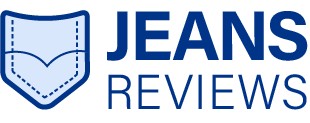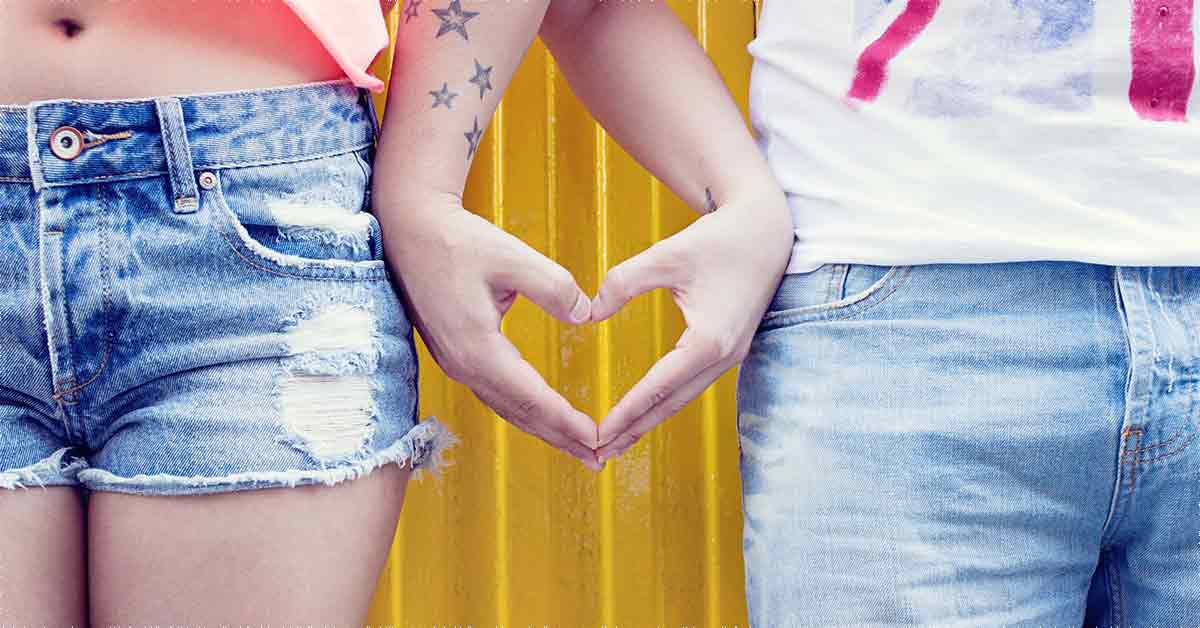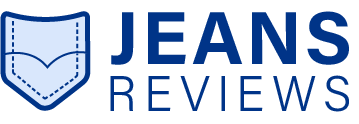The parts of jeans refer to the various components or elements that make up a pair of jeans. These parts include the waistband, fly, pockets, seams, rivets, hem, belt loops, back yoke, coin pocket, bartacks, etc. Each serves a specific function in the construction and design of the garment.
Today, I will dive into the different fascinating parts of denim jeans. This simple anatomy of jeans will help you know the 43 parts of jeans. And you will also have a new experience when you wear or buy new jeans.
So, let’s explore the various parts of jeans and their function.
Table of Contents
Basic Parts of jeans
Different unique components make up parts of jeans. These particular parts make each pair of jeans strong, pretty, and unique.
1. Waist Band
The waistband is a vital part of jeans, sewn by chain stitch on top of the front and back. Double-layered and essential for the pants to fit correctly.
Manufacturers usually make it from denim fabric. This waistband wraps the wearer’s waist to provide grip.
However, the waistband size tells you the size of your jeans.
2. Belt Loop
Belt loops are little loops sewn to the waistband of jeans. So, belt loops make it easy to wear your belt. It helps to keep your jeans up and look nice simultaneously.
They usually use the same fabric as jeans. In classic jeans, manufacturers commonly use five loops, sometimes seven loops. Belt loops are very important parts of jeans.
3. Fly
The jeans fly piece is the part in the front of your jeans that helps you put them on and remove them. It usually has a zipper or buttons. You open the fly when you need to go to the bathroom or change.
So, the jeans fly is essential because it makes it easy to wear and take off your pants whenever needed.
Pull-on jeans do not use zippers or buttons on the fly pieces. Typically, manufacturers use elastane in the waistband. To do that, sew fly pieces onto the front parts and waistband.
3.1. Zipper Fly
The zipper fly allows you to open and close it using a zipper, which serves as the fastening part of jeans.
3.2. Button Fly
Button fly pieces are opened and closed using buttons.
4. Coin pocket or watch pocket
The coin or watch pocket in jeans is a small special pocket. It’s like a tiny secret spot, usually on the front right side.
People used it to carry coins or small things like watches, keys, etc. You can also use it for little things you want to keep safe—a small pocket, like a little hideaway for your small stuff.
So, if you have a little treasure or something small to carry, the coin or watch pocket is the perfect spot in your jeans!
5. Front Pocket
The front curve pocket of jeans is where you put your hands. The pockets on the front have a curved shape.
When you wear jeans, you can slide your hands into these pockets. They’re great parts of jeans for keeping your hands warm or holding a phone.
6. Back Pocket
The back pocket of the jeans is on the back side, where you can keep things, like a small bag on your jeans.
People often put things like a wallet or a tissue in there. You can use it to carry things when you don’t want to hold them in your hands.
6.1. Back pocket stitching:
Back pocket stitching refers to the decorative or branding stitching found on the back pockets of jeans. This iconic stitching serves aesthetic purposes, adding visual interest to the garment and branding, distinguishing the jeans. Levi’s calls this stitching pattern the “Arcuate.”
7. Crotch Point
The crotch point is where the four parts, two front parts, and two back parts of jeans, meet in the middle. The center part of your jeans.
This area is essential because it lets you move when you walk, run, or play. The crotch point is a special place that helps your pants fit well and feel good.
So, when you wear jeans, remember that the crotch point ensures you can move and have fun in your comfy jeans!
8. Front Rise
The front rise of jeans is the part at the front, near your tummy. The exact measurement is from the seam at the center of the jeans’ crotch point to the top of the front waistband.
The front rise is essential because it helps your jeans stay in the right place on your body. When you wear jeans, the front rise is like the top part that hugs your tummy a little bit.
9. Back Rise
The back rise of jeans is the part at the back, near your bottom, from the center of the jeans’ crotch to the top of the back waistband.
Just like the front rise helps the front of your pants stay in the right place, the back rise helps the back of your pants do the same.
Like a good friend for your bottom, when you wear jeans, the back rise ensures your pants fit well and feel comfy.
10. Back yoke
The back yoke is a small part of jeans located at the back, near your waist. It acts like a helper, ensuring your pants fit nicely on your bottom. This part is crucial for making your jeans look good and feel comfortable.
11. Bottom Hem
The bottom hem is the edge at the bottom of your jeans, near your shoes.
When you wear jeans, the bottom can touch the ground, boots, ankle, or above the ankle.
Like the feet of your jeans.
12. Leg Opening
The leg opening of jeans is where your feet go in and out, like the bottom of your pants, near your shoes.
When you wear jeans, the leg opening is like the door for your feet.
It ensures your pants are easy to wear and take off.
13. Inseam on jeans
The inseam on jeans is the length from the crotch point to the hem of your jeans, like the inner path of your legs. When you wear jeans, the inseam ensures your pants fit just right.
Knowing your inseam length is better when buying a new pair of jeans.
Do you know your inseam length?
14. Side Seam or outseam
The side seam of jeans is the outer part sewing line of the front and back parts from the bottom of the waistband to the bottom hem.
Like the side path of your jeans, the side seam helps your pants keep their shape.
15. Bar tack
Bar tack stitches strengthen clothes in areas that experience a lot of stretching or pulling.
People often use bar tacks in places like pockets and belt loops, which require much use.
16. Flat felled seam
Manufacturers or designers join two pieces of fabric with a seam allowance in a flat felled seam sewing technique. The maker presses the fold flat and stitches along the folded edge to secure it in place.
This method results in a durable, flat seam with no visible raw edges on either side of the fabric.
17. Face Side
When you wear jeans, everyone notices the face side. It can have excellent designs and colors. You can see the face side in jeans when you look at them.
When you wear your jeans, remember the face side is the one that makes your jeans stand out and look great!
18. Underside
The inside of jeans is the part that touches your legs when you wear them, like a gentle hug for your legs.
Understanding the construction and design of denim pants offers valuable insights into the basic parts of jeans!
“Essential Trimmings of Jeans” refers to critical components that are vital parts of jeans.
Essential Trimmings of Jeans
Trimmings are decorative additions to clothes that make them look better or serve the purpose of durability and strength. In the context of parts of jeans, trimmings might include:
19. Jeans Button or Metal Button
The jeans button or metal shank button fastens the waistband of the jeans. A Jeans Button consists of 2 components – The Button & Button tack.
20. Rivets
To increase strength and durability, designers use rivets on jeans. They also add a decorative touch to the pants.
A Jeans Rivet set consists of 2 components – The Rivet & Rivet tack.
21. Zipper
A zipper is a fastener that helps you open and close your jeans—a long strip with tiny teeth that come together.
When you pull the zipper up, it closes your pants, and when you pull it down, it opens them.
22. Leather Patch
A leather patch for jeans is a small piece of leather, like a little tag, often found on the back of your waistband on jeans.
It’s not just there to look cool – it usually has the brand’s name or logo. This patch is like a tiny friend that tells you about your jeans.
23. Sewing Thread
Sewing thread is a yarn that joins two or more parts of the garments by sewing and creating a seamline.
Usually, manufacturers use 100% polyester golden color thread to sew jeans.
24. Label
The label is a little tag that tells you important things about your jeans. You can usually find it inside, including the brand’s name, size, and care instructions for your jeans.
The label is like a tiny book that shares information about your pants.
So, when you check the inside of your jeans, remember the label is there to help you know more about your favorite pair!
25. Pocket Lining
The pocket lining keeps the pockets inside. Sometimes, people call pocket lining pocketing fabric.
People usually make it from cotton, polyester, or blended fabric.
Design And decorative Parts of Jeans
Decorative components of jeans are elements added to jeans for aesthetic purposes rather than functional ones. These components enhance the visual appeal of the garment, and they include:
26. Whiskers:
Manufacturers intentionally apply whiskering or whisker patterns during manufacturing to create a worn and aged appearance, adding character to the denim fabric.
These faded lines or patterns around the crotch area and pockets of the front parts of the jeans are typically referred to as “whiskering” or “whisker patterns.”
27. Front Scrapping:
A surface of faded appearance on jeans from thigh to knee area.
28. Chevron
Chevron is a vertically flipped V-shaped pattern on the front parts of jeans from the inseam.
29. Damage or Ripped
Damage or ripping on jeans refers to purposefully distressing the denim fabric to make it look worn or aged. Damage or rips on jeans are intentional changes to the fabric to make it look old or worn out.
Designers treat denim to make it look old or worn out.
30. Grinding:
Grinding is a worn or aged appearance-creating technique on jeans. In this process, designers use rough tools like a grinder to rub against the denim. This process creates a worn look in specific areas, typically along seams, edges, or pockets.
31. Tagging effect
The tacking or tagging refers to creating specific creases, folds, or puckering in the jeans.
32. Tie effect
The tie effect is a short and long vertical line on jeans.
33. Back Scraping
Backside scraping is the faded appearance of the back side of jeans in the seating area.
34. Back knee Whisker
Back knee whiskers on jeans refer to creased lines that radiate from the back of the knee area.
35. Embroidery:
Intricately stitched patterns or designs on various parts of the denim for added visual interest.
36. Patchwork:
The tailor sews different fabric patches onto the denim, creating a mosaic of colors and textures.
37. Beads and Sequins:
Tiny beads or sequins embellished on pockets, hems, or other areas for a glamorous touch.
38. Studs:
Designers strategically place metal studs or rivets on pockets or seams to create an edgy aesthetic.
39. Lace Inserts:
We add delicate lace to pockets, along seams, or incorporate it into distressed designs.
40. Painted Designs:
Hand-painted or screen-printed designs on the denim for artistic expression
41. Frayed Edges:
Raw or frayed edges on pockets, hems, or seams for a casual and distressed appearance
42. Printed Patterns:
Denim with printed patterns such as stripes, checks, or floral designs
43. Scratch
Jeans can get scratched, resulting in marks or abrasions on the denim pants.
44. Contrast Stitching:
Stitching in a contrasting color for a bold and visible outline on seams and pockets.
45. Embossed or Branded Hardware:
Branded buttons, rivets, or other hardware elements with embossed logos or unique designs.
46. Faux Leather Accents:
Addition of faux leather patches or trims on pockets, waistbands, or other areas for texture.
Various denim design elements create diverse styles in denim fashion, offering many options for expressing oneself through clothing.
The design and decorative parts of jeans include different elements that help make them look cool, allowing people to be creative with their denim style.
FAQs of parts of jeans
Question: What do you call the top parts of jeans?
Answer: Waistband
Question: What type of pants are jeans?
Answer: “Jeans” are pants typically made from denim fabric and worn as casual attire.
Question: What is the bottom of the pants called?
Answer: What is the bottom of the pants called?
Question: What are the metal things on jeans called?
Answer: Rivets And Button
Question: What are denim buttons called?
Answer: Shank button Or metal button
Question: Why do jeans have tiny pockets?
Answer: The small pocket is called a watch pocket because it was originally intended as a safe place for men to store their pocket watches.
Check today the different parts of jeans that you have in your wardrobe
That is 46 parts of jeans. As a jeans lover, you now know about different parts of your jeans.
Checking the different parts of jeans when you buy a new pair will help you get a unique experience.
I would also like to hear from you: Which parts of the jeans do you know from today’s post? However, let me know by leaving a comment below.


